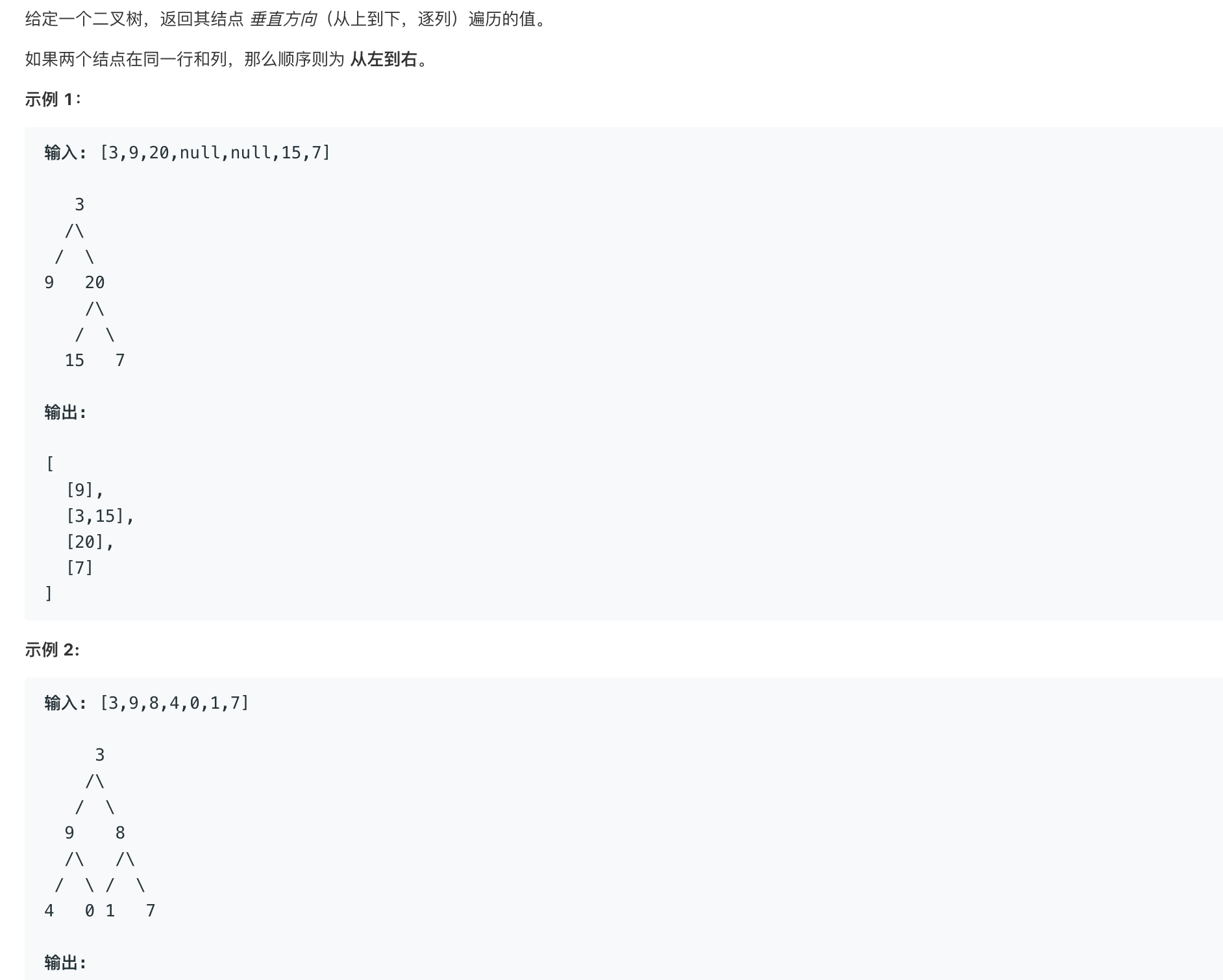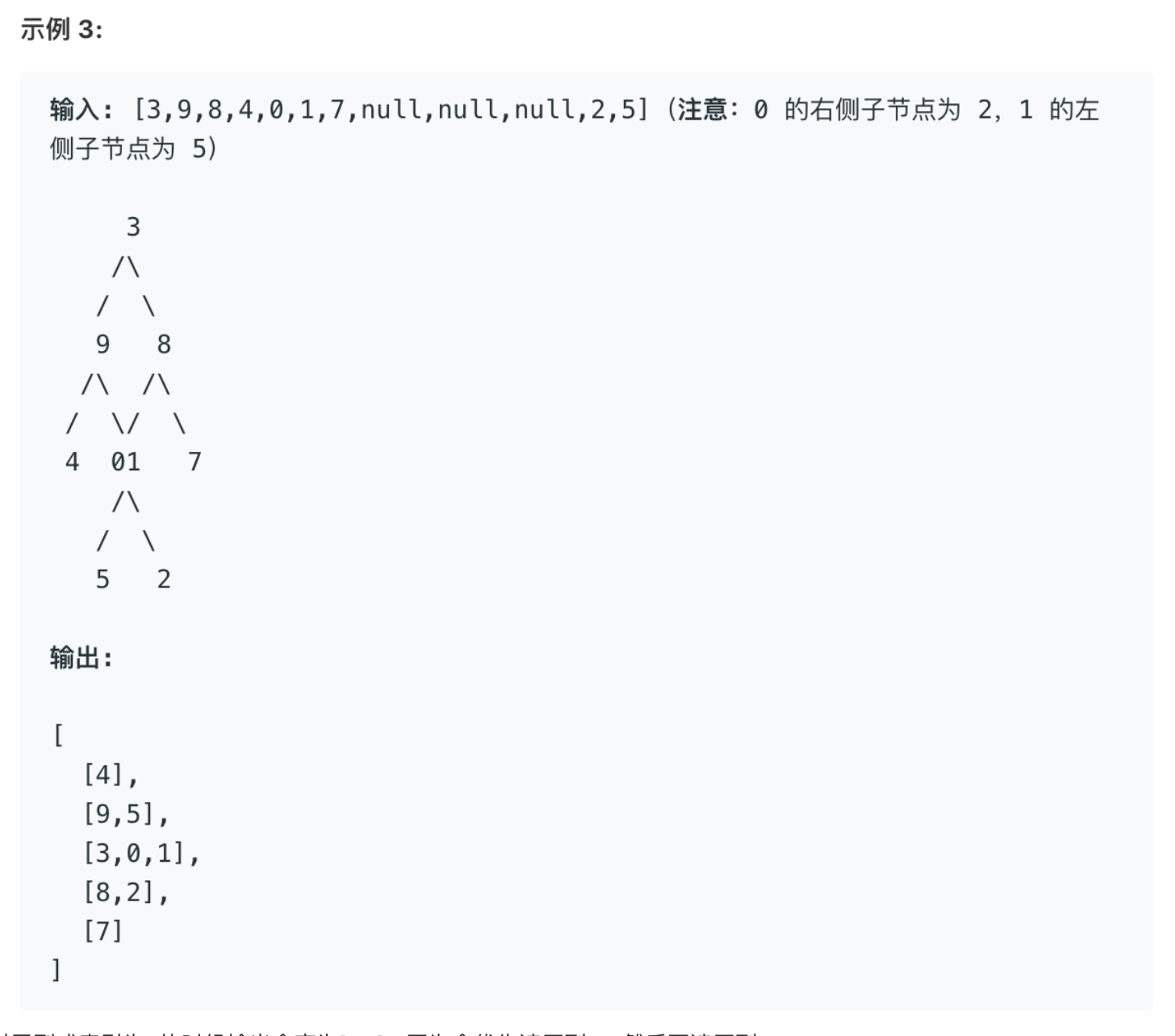https://leetcode-cn.com/problems/binary-tree-vertical-order-traversal/
题目描述如下:

为了能够满足最终输出的要求,构建根据列式索引为 KEY,value 为相同列式索引的元素构成List,所以中间存储过程可以通过构建 `TreeMap<Integer,List<int[]>>`,最终遍历输出
这里使用*TreeMap*是为了满足根据列式索引的排序输出,为啥value 为List<int[]>?这里我是通过如此的数据结构来记录 depth 和 width,其实我们也可以自己构建对象来记录我们需要的状态。
1. 如何遍历的问题:
- 借鉴中序遍历
2. 如何记录根据列式索引输出:
- 根节点列式索引为width初始化为0,那么若存在左子节点的话则对应的列式索引为`width-1`,若存在右子节点则对应的列式索引为`width+1`,由此递归
3. **如何保证根据深度较小的节点遍历的时候优先输出**:
- 通过设置`depth`来记录层次,然后在最终遍历输出的时候保证深度越小的优先输出,如果少了此过程,在如下测试用例中

对于列式索引为1的时候输出会变为[2,8],因为会优先遍历到2,然后再遍历到8。
综上所述,width 和 depth 是我需要重点围绕处理的,如何记录存储各位可以有自己的实现。
附上代码
```
import java.util.ArrayList;
import java.util.List;
import java.util.TreeMap;
public class LC314 {
private List<List<Integer>> ans = new ArrayList<>();
private TreeMap<Integer,List<int[]>> map =new TreeMap<>();
public List<List<Integer>> verticalOrder(TreeNode root) {
if(root == null) return ans;
// 初始化 depth 和 width 分别为0;
helper(root,0,0);
for(List<int[]> item:map.values()){
// 自定义排序规则,保证深度越小的元素优先输出,int[0]记录的是深度
item.sort((a,b)->{
return a[0]-b[0];
});
List<Integer> tmp = new ArrayList<>();
for(int[] i:item){
//int[1]记录的是节点值
tmp.add(i[1]);
}
ans.add(tmp);
}
return ans;
}
private void helper(TreeNode root,int index,int depth){
if(root != null){
if(!map.containsKey(index)) map.put(index,new ArrayList<>());
map.get(index).add(new int[]{depth, root.val});
if(root.left != null){
helper(root.left,index-1, depth+1);
}
if(root.right != null){
helper(root.right,index+1, depth+1);
}
}
}
}